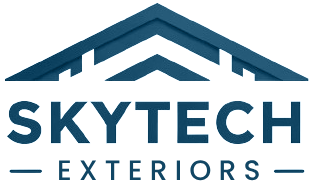What Color Roof Is Best for Energy Efficiency?
Choosing the right color for your roof goes beyond
aesthetics—it can impact the energy efficiency and comfort of your home. The
color of your roof plays a significant role in how much heat is absorbed or
reflected, affecting your cooling and heating costs throughout the year. In
this guide, we explore the relationship between roof color and energy
efficiency to help homeowners make an informed decision during the
consideration stage of evaluating roofing options.
Understanding Roof Color and Energy Efficiency
Heat Absorption vs. Reflection:
Statistical Insight: Light-colored roofs reflect more
sunlight and heat compared to dark-colored roofs.
According to studies by the Lawrence Berkeley National
Laboratory (LBNL), roof color can affect surface temperatures and energy
consumption in residential buildings.
Cool Roofs and Reflectivity:
Statistical Insight: Cool roofs, typically painted with
reflective coatings or made from materials with high solar reflectance, reduce
roof surface temperatures.
The U.S. Environmental Protection Agency (EPA) promotes cool
roofing technologies to mitigate urban heat islands and lower cooling costs.
Best Roof Colors for Energy Efficiency
Light Colors (White, Beige, Light Gray):
Statistical Insight: Light-colored roofs reflect 25-50% more
sunlight than dark-colored roofs.
Research by the Cool Roof Rating Council (CRRC) indicates
that white and light-colored roofs can reduce cooling energy use by up to 20%
in warm climates.
Cool Roof Coatings:
Statistical Insight: Reflective coatings applied to roofs
can increase solar reflectance and thermal emittance, enhancing energy
efficiency.
The Roofing Research and Standards Development Council
(RRSDC) recommends cool roof coatings for improving building energy performance
and comfort.
Consideration of Climate and Regional Factors:
Choose roof colors based on your climate zone and regional
weather patterns.
The American Society of Heating, Refrigerating and
Air-Conditioning Engineers (ASHRAE) offers guidelines for selecting roof colors
based on climate data and energy modeling.
Factors to Consider When Choosing Roof Colors
Insulation and Underlayment:
Statistical Insight: Proper insulation and underlayment can
complement roof color choices by enhancing thermal performance.
The Department of Energy advises homeowners to consider
comprehensive roof system design to maximize energy efficiency benefits.
Building Orientation and Solar Exposure:
Evaluate how roof color interacts with building orientation
and solar exposure throughout the day.
The National Renewable Energy Laboratory (NREL) provides
tools for simulating energy performance based on roof color and building
characteristics.
Environmental and Economic Benefits
Energy Savings:
Statistical Insight: Energy-efficient roof colors can reduce
cooling costs by 10-20% annually.
The Cool Roof Rating Council (CRRC) estimates potential
savings of hundreds of dollars per year in energy bills with reflective roofing
materials.
Environmental Impact:
Statistical Insight: Cool roofs contribute to reducing
greenhouse gas emissions associated with energy consumption.
The EPA promotes cool roofing as a sustainable building
practice to mitigate climate change and improve urban air quality.
Selecting the best roof color for energy efficiency involves considering factors such as solar reflectance, regional climate, and building design. Light-colored roofs and cool roof coatings are effective choices for reducing heat absorption and lowering cooling costs, particularly in warm climates. By understanding the impact of roof color on energy efficiency and consulting with roofing professionals, homeowners can make informed decisions that enhance comfort, lower energy bills, and promote environmental sustainability. Explore cool roof options further to determine the best solution for your home’s roofing needs.


